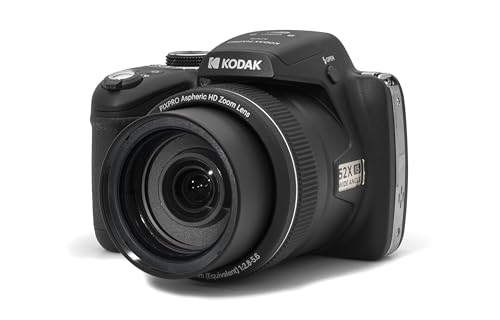


Video surveillance cameras are everywhere these days, from stores and offices to homes and public spaces. While they are meant to enhance security and provide peace of mind, they can also be vulnerable to hacking.
Hacking into a video surveillance camera can be a serious breach of privacy and security, but it’s important to understand how it can be done in order to protect yourself and your information.
There are various methods that hackers can use to access video surveillance cameras, including exploiting software vulnerabilities, using default passwords, or even physically tampering with the camera itself.
By being aware of these potential risks and taking steps to secure your cameras, you can help prevent unauthorized access and protect your privacy.
Understanding Video Surveillance Systems
Video surveillance systems are a critical component of security measures in many establishments, including homes, businesses, and public spaces. These systems typically consist of cameras that capture video footage, a recording device to store the footage, and a monitoring station where security personnel can view the live or recorded footage.
Types of Video Surveillance Cameras
- Fixed cameras: These cameras are stationary and capture footage from a specific angle.
- Pan-tilt-zoom (PTZ) cameras: These cameras can be remotely controlled to pan, tilt, and zoom to capture different views.
Video surveillance systems can be analog or digital, with digital systems becoming more common due to their higher image quality and flexibility. These systems can be connected to the internet for remote monitoring and management, allowing users to access footage from anywhere with an internet connection.
Types of Video Surveillance Cameras
When it comes to video surveillance cameras, there are several types available on the market. Each type has its own unique features and benefits, making it suitable for different surveillance needs. Some of the most common types of video surveillance cameras include:
- Fixed cameras: These cameras are stationary and provide a fixed field of view. They are ideal for monitoring specific areas or locations.
- PTZ (Pan-Tilt-Zoom) cameras: These cameras can pan, tilt, and zoom to provide a wider coverage area and allow for remote control of the camera’s movement.
- Dome cameras: Dome cameras are designed to be discreet and are often used in indoor surveillance applications. They are also vandal-resistant.
- Bullet cameras: Bullet cameras are long and cylindrical in shape, making them suitable for outdoor surveillance. They are also weatherproof and can withstand harsh conditions.
- Wireless cameras: Wireless cameras transmit video footage wirelessly, making them easy to install and suitable for remote locations where running cables is not feasible.
Security Risks of Video Surveillance Cameras
While video surveillance cameras are an important tool for enhancing security, they also come with their own set of security risks. Hackers can exploit vulnerabilities in camera software or hardware to gain unauthorized access to the camera feed. This can lead to privacy breaches, unauthorized surveillance, and even physical security threats.
Additionally, poorly configured cameras with default passwords or outdated firmware are easy targets for hackers. Once a camera is compromised, hackers can use it as a foothold to launch further attacks on the network or other connected devices.
Furthermore, video surveillance cameras that store footage on a cloud server are susceptible to data breaches if the server is not adequately secured. Hackers can intercept the video feed, manipulate footage, or even delete recordings, compromising the integrity of the surveillance system.
| Security Risks: |
| 1. Unauthorized access to camera feed |
| 2. Privacy breaches |
| 3. Physical security threats |
| 4. Network vulnerabilities |
| 5. Data breaches |
Legal Implications of Hacking Video Surveillance Cameras
Hacking video surveillance cameras is illegal and can result in severe consequences. Unauthorized access to security cameras violates privacy laws and can lead to criminal charges. In many jurisdictions, hacking into surveillance systems is considered a serious offense punishable by fines and imprisonment.
Furthermore, hacking into video surveillance cameras can compromise the security of individuals and organizations, putting them at risk of theft, vandalism, or other criminal activities. It can also expose sensitive information and data to unauthorized parties, leading to potential legal actions and lawsuits.
It is important to understand that tampering with video surveillance systems is a violation of privacy rights and can have far-reaching legal implications. It is always best to seek legal advice and follow ethical guidelines when dealing with security cameras to avoid legal trouble and protect the rights of others.
Steps to Hack a Video Surveillance Camera
Here are the steps to hack a video surveillance camera:
- Identify the target camera’s IP address.
- Use port scanning tools to find open ports on the camera.
- Attempt default username and password combinations to gain access.
- Use known exploits or vulnerabilities to bypass security measures.
- Install malware or backdoors to gain persistent access to the camera.
- Monitor and control the camera remotely using the compromised access.
Protecting Your Video Surveillance System
When it comes to securing your video surveillance system, there are several steps you can take to prevent hacking and unauthorized access:
- Change default passwords: Make sure to change the default passwords on your cameras and recording devices to unique, strong passwords that are hard to guess.
- Use encryption: Enable encryption on your video surveillance system to protect the data being transmitted and stored.
- Update firmware: Regularly update the firmware on your cameras and recording devices to patch any security vulnerabilities.
- Limit access: Restrict access to the video surveillance system to authorized users only and regularly review access permissions.
- Monitor for suspicious activity: Keep an eye out for any unusual or unauthorized access to your video surveillance system and take action immediately if detected.





